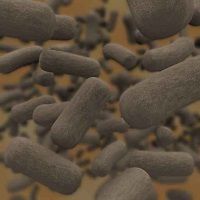Article
Bacteria Band Together to Fight Infection
Author(s):
In a recent study, researchers assessed seven groups of mice that were given various antibiotics and then exposed to C. diff spores. Using advanced genetic analysis, the team determined which bacteria survived the antibiotic challenge, as well as what factors allowed C. diff to effectively infect the mice.

In a study published in the July 14, 2015 issue of mBio, University of Michigan Medical School researchers suggested that “individual bacterial populations do not drive colonization resistance to Clostridium difficile,” but rather “multiple diverse assemblages act in concert to mediate colonization resistance.”
For the study, Patrick D. Schloss, PhD, Associate Professor of Microbiology & Immunology at the University of Michigan, and colleagues assessed seven groups of mice that were given various antibiotics and then exposed to C. diff spores. Using advanced genetic analysis, the team determined which bacteria survived the antibiotic challenge, as well as what factors allowed C. diff to effectively infect the mice.
Using these factors, Dr. Schloss and colleagues also developed a computer model to predict the successes of C. diff in infecting other mice in the study, based on knowledge of the bacteria living in the natural gut of those mice. The model had a success rate of 90% for predicting whether C. diff would successfully infect the mice or not.
“We know that individual humans all have different collections of gut bacteria, that your internal 'village' is different from mine. But research has mostly focused on studying one collection at a time,” said Dr. Schloss. “By looking at many types of microbiomes at once, we were able to tease out a subset of bacterial communities that appear to resist C. diff colonization, and predict to what extent they could prevent an infection.”
Dr. Schloss hopes that the team’s findings will lead to models that could be used as diagnostic tools for predicting which patients require the most protection against C. diff prior to hospitalization or to customize a protective dose of bacteria either prior to or after C. diff exposure.
The researchers stress that no species of bacteria protected against colonization on its own. Only certain mixes of species were successful. What’s more, no one particular mix of bacteria was most successful at resisting colonization; several diverse bacterial mixes resisted invasion.
Whereas members of the Porphyromonadaceae, Lachnospiraceae, Lactobacillus, Alistipes, and Turicibacter families of bacteria were associated with resistance to C. diff, loss of these protective species and a rise in Escherichia or Streptococcus bacteria was associated with C. diff susceptibility. “It's the community that matters, and antibiotics screw it up,” Dr.Schloss explained.
The University of Michigan researchers, having shown the concept in mice, are now working to take the next step, into human studies. Already, they are studying gut microbiome data from patients treatment for symptoms of C. diff infection in any of the University of Michigan Health System’s hospitals. They will also study samples from patients without C. diff symptoms to hopefully determine how many patients carry the bacterium in a dormant, non-infectious state.
Dr. Schloss notes that the currently available method of fecal transplant to treat severe C. diff infection is “an amazingly effective treatment, but if we could develop therapeutic probiotics instead, those would carry less risk. But first we have to know how the resistant communities are working.”





